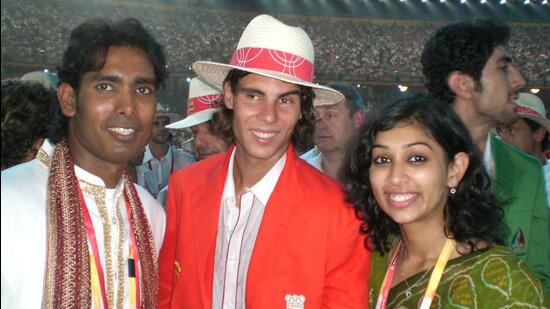
The Village life has a special place in the Olympics
5 months ago | 49 Views
Bengaluru: The day Saina Nehwal lost her quarterfinal at the 2008 Beijing Games, her roommate learnt a little bit about the Olympics. “I was an 18-year-old for whom qualifying in itself was a big deal,” says former table tennis player Neha Aggarwal, “and I saw an athlete my age for whom winning meant so much. Saina cried a lot the day she lost.”
An unseeded Saina had stunned then world No 5 Wang Chen in the last 16 before she fell in the quarters.
“Every day, I’d wake up and see Saina had already left for training and at night when I’d return to our room, she would be asleep. Somewhere as an athlete, her discipline and focus left an imprint on me.”
It’s what living in an Olympic village can do to you.
The Olympics are coming to life in Paris, and the Village – where thousands of athletes from across the world eat their meals together, and live as a community – is bustling with taut nerves and friendly smiles. Rafa Nadal and Carlos Alcaraz have already posed with half a dozen Indian athletes in Paris. There’s a somewhat dog-eared account of gold-medal cyclist Jamie Staff finding Nadal standing right next to him in the Beijing Village laundry room. “He was shoving all his colors and whites in together,” Staff reportedly said. “I really wanted to tell him, ‘Dude, you’re going to have a nightmare with that. You can’t just put the whole bag in – there are reds in with whites’. But what can you do?”
Before smartphones, athletes carried around cameras, if they could afford one. At the 2000 Sydney Games, Nisha Millet was pleased with herself for getting a picture with Dawn Frasier – the first female swimmer to go under a minute in the 100m freestyle.
“Later I was sitting in the stands and cheering when my camera fell and was smashed to pieces. I was heartbroken.” She recalls the sight of everyone rushing toward Mohammad Ali when he walked into the dining hall, chasing Sergey Bubka for a picture and being heartbroken to learn that Kobe Bryant wasn’t staying in the Village. The US basketball teams’ 7-footer members have traditionally stayed outside the Village - on a cruise ship with Navy SEALs on guard during Athens 2004 and later in Rio 2016.
Anjali Bhagwat who debuted along with Abhinav Bindra at the Sydney Games, remembers both of them feeling lost at the Village on the first day.
“It was so huge we didn’t know where the dining hall was and we were too shy to ask anyone,” says Anjali, “Once, Monica Seles came and sat at our table in the dining hall. Abhinav & I froze and looked at each other wondering which of us would ask for a picture. It had to be Abhinav, since he was younger of the two of us,” laughs Anjali.”
Anjali went on to become the first Indian shooter to make an Olympic final and took part in two more Games. She calls Athens (2004) the most low-key of the three Games, Beijing the glitziest and Sydney, her favourite.
In Sydney, only one Indian – weightlifter Karnam Malleshwari finished with a medal. “It felt like all of us had won,” says Nisha, “I was staying in the room opposite Karnam’s and some of us went out and bought balloons and flowers for her.”
Unlike earlier Olympics, where Villages turned into white elephants or rundown government housing, the Sydney Games Village in the suburb of Newington went on to become a permanent neighbourhood with all its streets named after Olympians.
“What was really nice was that whenever an athlete walked into the dining hall with their medal, everyone would just drop their spoons, and burst into applause. Nothing matches the experience of an Olympic village. Whether you’re a first-timer or a legend, once you’re in the Village wearing an athlete’s badge, everyone is an equal.”
While Paris will offer predominantly vegan and vegetarian fare, Neha recalls struggling to find non-meat options in Beijing and having to survive on salads and pizzas.
“Until our events we would all try to eat right but as soon as we were done with our competitions, we’d devour burgers in the dining hall,” says Nisha, laughing. “We’d hear stories of hook-ups between athletes from other countries after events at the Village.”
Nisha’s mother was born in Malawi. So, she was excited to spot athletes from the south-east African country at the Village. “I told them my mum lived there for ten years. They were so overjoyed and surprised that someone from India had roots in their country. It was just such a nice feeling to connect.”
“Whenever athletes from other countries heard we were from India, they’d be very curious,” says Anjali, “Some would ask if cows indeed strolled on our streets, others would want to know about Haridwar, yoga, or sarees.” For her final Olympics in Beijing, Anjali thoughtfully carried packets of bindis and naths (nose rings) to distribute among female athletes of other countries.
“No matter how much the Games evolve, some traditions stay,” says Nisha, “Every Olympian in the Village gets to take their blanket home. I still have mine. A blue one with the words ‘Sydney 2000’ painted on it.”
#




















